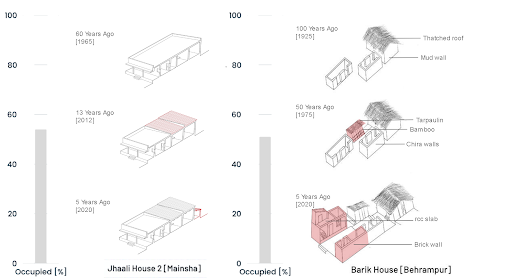Sem 04 / Culture Studies
Urbanisation
Rohit Mujumdar
This course asks how and why should architectural production be situated critically within the urban experience? Towards this end, it introduces students to key debates on urbanisation in the global South. As a part of the Urbanisation course in the current academic year, 3rd students reflected on their fieldwork in Berahpura island (Chilika Lake, Orissa) to articulate ten questions:
- How have changing weather patterns and landforms shaped the livelihoods of the inhabitants?
- How does caste intersect with changing weather patterns to produce livelihood adaptations amongst the inhabitants?
- What are the spatial networks of fishing, agricultural and tourism economy?
- How have transformations in houseforms reshaped spatial affordances?
- How do changing weather and household configurations shape the spatial and material practices of incrementality in houseforms?
- How have changes in livelihoods reshaped the notions of property amongst Berahpura island’s households?
- What are the gendered patterns of inhabiting houseforms and settlement?
- How do fishers’ practices make temporal negotiations of the coastal edge?
- How is livelihood adaptation (aquaculture and tourism) reshaping urban form?
- How do Berahpura island’s socionatural transformations produce an architectural composition?



Spatial networks of the economy



Incremental housing practices